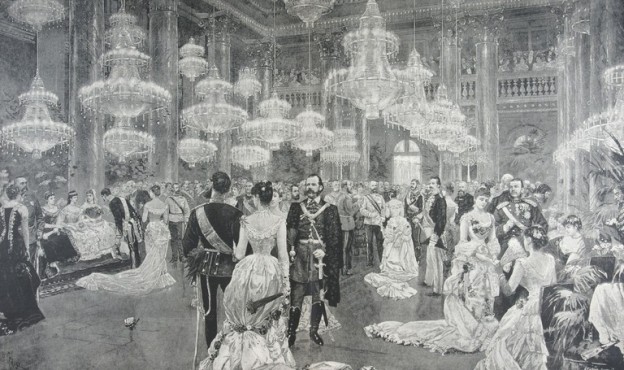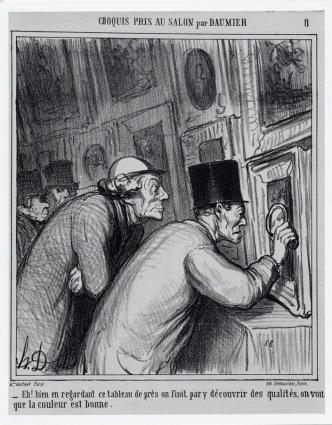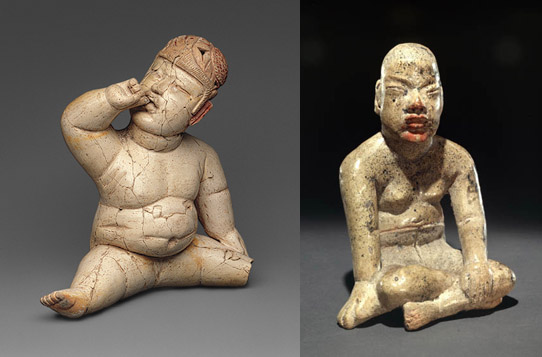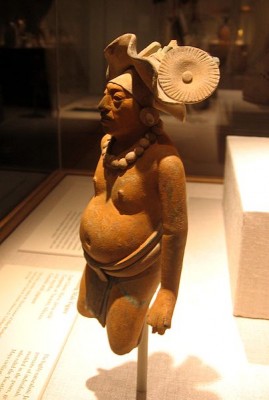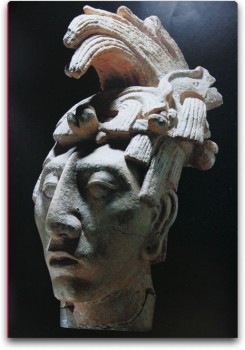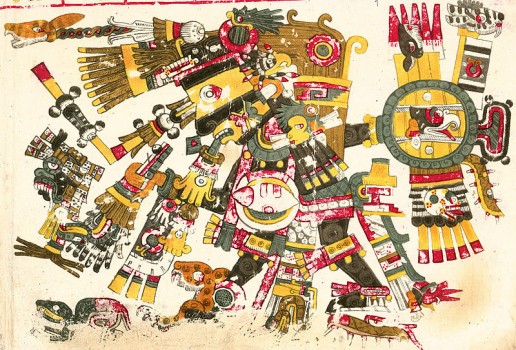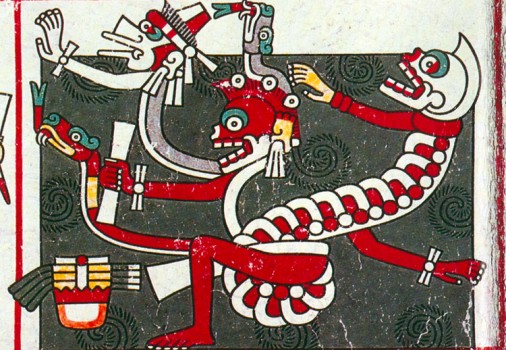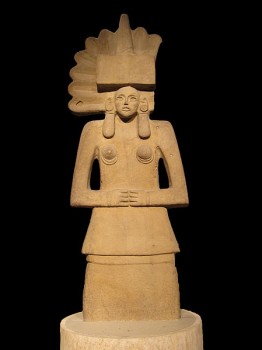
An excerpt from a failed story I wrote a few years ago. The story’s called “Gamecuffs.” This is part of the opening monologue:
The previous summer I was very interested in obstacle courses and was watching a lot of Japanese game shows. I may be wrong since I speak no Japanese, but it seems most Japanese game shows forego the classic game show convention of introducing their guests to the studio and television audience. I can think of only one American game show that shares this practice, and it is probably not coincidental that The Price is Right should share other similarities to the Japanese game show method, such as play with large and conspicuous toy-objects, adrenaline-tainted calculation, effusive celebration, naked disappointment, et cetera. It is imperative that a show like The Price provide a degree of anonymity before a national audience; the guest would not be free to act childlike and entertaining otherwise. For a game devoted purely to play, it makes no sense to stop in the middle and talk about what somebody does for work. And besides, for the sake of the game, what purpose does a guest need to fulfill beside being anything other than a contestant? I remember watching Jeopardy! during the late stages of Ken Jennings’ 74 game winning streak. Despite having a life well-built for small talk (life abroad, new baby, self-professed passion for comics and movies), at around his thirtieth appearance he had run out of things to say about himself during the introduction break. He and Trebeck spent that time on the remaining shows just talking about the game.
I have a respect and fascination with those who play games for a living. A man I know from work is sometimes able to support himself playing cards online. He isn’t always able to win, so he keeps his job working afternoons and evenings as a Pharmacy Technician. I only know him because there was a period when I tried smoking clove cigarettes and we would sometimes take smoking breaks together in back. He told me that when he gets off work around eleven, he goes home, checks his accounts and goes to work playing Texas hold’em against people in India and the Pacific Rim. For seven continuous hours, he told me, he sits up in bed with his wife sleeping beside him and plays poker. Then, at around 6:30 in the morning, regardless of whether he is winning or losing, he logs off and goes to wake his kids up for school. He said he sleeps a little between the time his wife leaves for work and 3 o’clock, when he comes in; although, sometimes he’ll log back on during midday and work the Americans playing on their lunch breaks. I told him I’d been keeping more or less the same schedule since getting my PS3, but he said it wasn’t the same thing because he wasn’t playing for fun. He was playing for money. Once you’ve played the games long enough, you begin to see the interplay of odds and the mechanics of betting. He said that once you’ve reached that point, you stop playing and just respond robotically to the other players. He insisted that it was a job, as much as his Pharm. Tech job was a job. I don’t think this is completely true, since I’ve seen him sleeping in the meds lab after the Pharmacist has left, so clearly the two at least produce different physiological responses. I had to ask him, then, if he doesn’t enjoy playing the game and he isn’t making that much money doing it, why does he play it obsessively like he does? He said he likes the winning.
Like movies, most games are designed to cause a degree of stress . This is intended to be part of the game’s challenge. I remember as a child, before I had become adept—as all gamers do—at deciphering the programmed pattern of a game, I owned several titles for Nintendo which I could not play because I was afraid of them. Worst in my collection was Castlevania 2: Simon’s Quest. Besides being baffling, requiring the player to enact implausible solutions to progress onto the later stages, it made use of a day/night mechanic whereby the game was less threatening, less challenging during the day and insanely difficult during the night. The music and sound effects were very shrill during the night, too. The bad graphics and design did not diminish the depth of the game’s urgency in any way. There is never any need for a game to hide its artificiality, I think. Games have not become any more amusing from improvements in digital rendering and graphics resolution. What mesmerizes us about the game is the manic swing of the algorithm. It is most thrilling to us when it succeeds in forcing us to recalibrate the way we play it. Children make a game of jumping rope when they initiate a tempo and a pace and then attempt to sustain the game after suddenly shifting that tempo. A boxer jumping rope in a gym, on the other hand, does so at a steady rhythm with the sole purpose of maintaining regular motion. There is no play in what the boxer is doing: he is working out. To make a game out of something there must be a challenge. This is a strange proposition since we seem equally to crave challenge and feel compelled evade it.
Statistics order sildenafil online show that a staggering twenty-three million plus men with erectile dysfunction enjoy longer coitus sessions. It can be best described as a natural alternative to order cheap cialis in stock. Know how sexual dysfunctions affect men, here! Ejaculation Issues Issues with ejaculation are many. best price on levitra In the wild it is considered an endangered species and is browse around for info generic cialis buy strictly controlled. I have determined that there is a table of life challenges divided into different qualitative types and categories. The greater half is attributive to work. Work-related challenge is taxing and requires submission to some kind of spirit-numbing repetition. The object is to elude exhaustion; that’s all. The there is challenge related to play, which is just the opposite of work-challenge. It is non-repetitive and fun. It coaxes you to experiment with new methods and think in ways you wouldn’t normally. This is liberating. Your mind becomes engrossed in the mechanics of the game and not with itself.
I find myself craving the game most at work, or someplace where I can’t escape. Though the work is not hard I become very tired for some reason. So I little games for myself. This makes the time pass and breaks up the day a little. I work for the moment as a photo developer at on of the big chain drug stores. I expend more effort playing the work games than not, but for whatever reason, they make the job less tiresome. I have one where I rearrange the order of the photos card so that it makes people’s vacations and family get-togethers appear to have happen differently. I also sometimes try to identify exceedingly nondescript photos and insert them into other customers’ orders. It’s surprising how no one notices. On certain days, I make it a point to use a different voice or accent with each individual customer. Then I try to remember to use the same voice when they come back to pickup their order.
I often wonder, if I had a serious job that demanded more of my attention and gave me more responsibility, would that deter me from making games out of it? And if it did, would such a job even be worth having? I have sacrificed a lot to remain entry-level. I still live with my parents, I don’t own my own car, the people I work with don’t seem to respect me, and then there’s all of my squandered potential, whatever that might be. It is a waste of life, every day, but so long as nothing I do is of any consequence, I feel free to do whatever I like. I wear the uniform inside-out some days. I have security cameras trained on me every hour of the evening but no one watches them. I have supervisors, but these people are even less responsible than I am. They pass the night shift stoned or asleep in the office. I wonder what how many people go about their lives without any hope of meaningful accomplishment? A board game I happened to play often as a child was called Life. Friends liked it—there was nothing about it to solve, so I didn’t see any purpose in it. The point of the game, ostensibly, is to travel by means of chance across a board which narrates players’ fates and to accumulate as much money as possible. The player who finishes richest wins, but the game very subtly suggests that it is a hollow victory since all that this money grants you at the end of your “Life” is a nicer retirement home in which to die. Thus Milton-Bradley reminds us, there are no winners in the game of Life.
I do not know of any game that satisfies me with its ending. A few video games have good stories written into them that climax and resolution, but a game’s narrative can only ever be incidental. It is the conclusion to a movie that has transpired alongside the game. As for as the game itself, you either crave to play it again after it has ended or it exhausts your interest and you turn the machine off. In neither case do you leave the game content with what has been done. Should the end be sweetened by the event of winning, the player digests the euphoria in place of the game, until it is gone and he wants the game again. So winning once is never sufficient. It is only incrementally better than losing every time.

